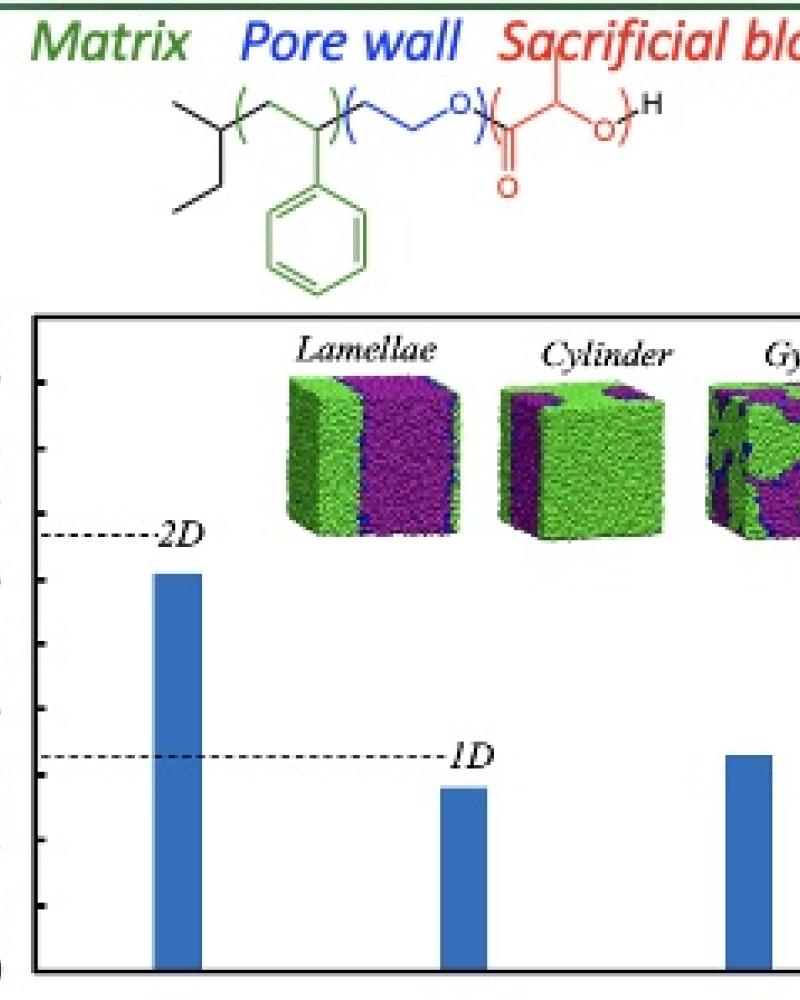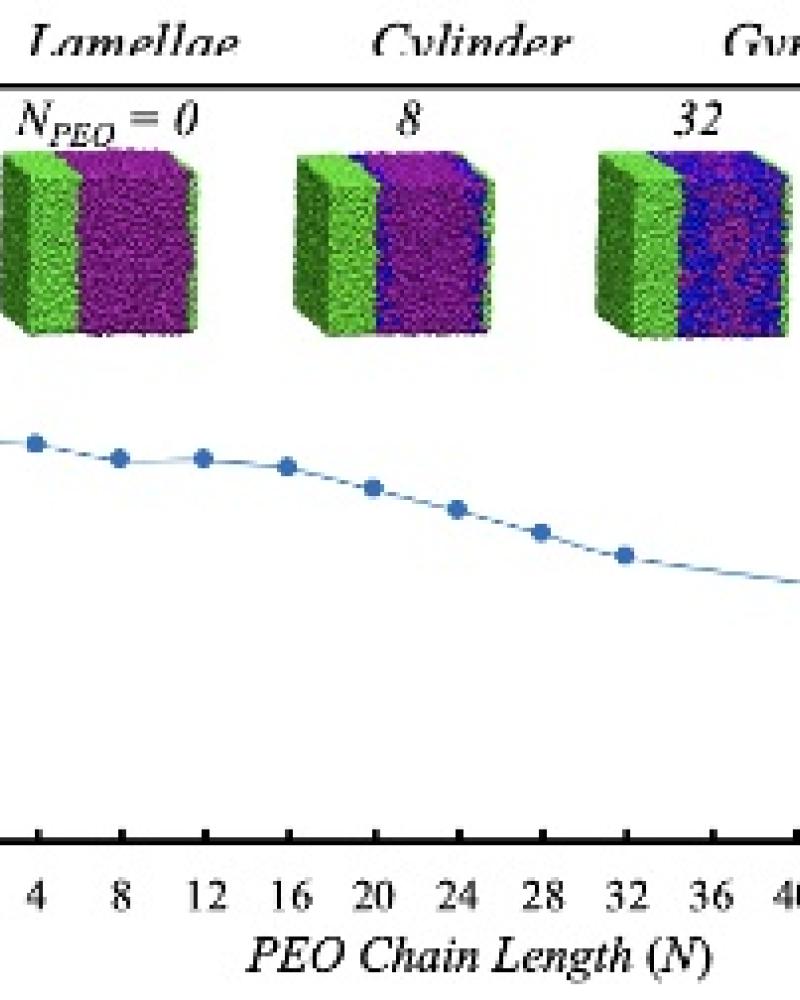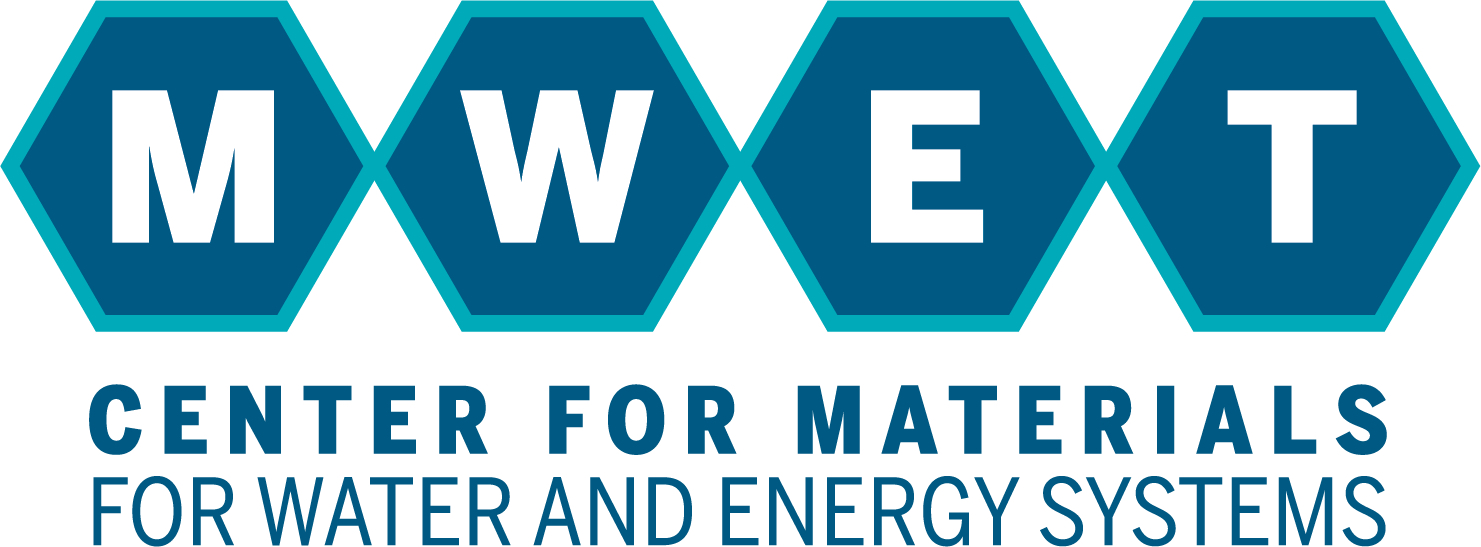
Scientific Achievement
Self-Consistent Field and Dissipative Fluid Dynamics simulations and polymer synthesis/membrane characterization probe the impact of pore morphology and pore wall coatings on water transport in a nanoporous membrane.
Image: Water transport is influenced by pore morphology.

Significance and Impact
An understanding of the transport properties of water on the nanometer scale crucial to enable the design and optimization of nanoporous membranes that are fouling resistant, highly permeable and very selective.
Image: Mobility of water is perturbed by interactions with water selective pore wall.
Research Details
- Transport of water in the confined, polymer-coated nanopores differs from the unconfined bulk.
- Mobility of water is shown to be perturbed by interactions with water selective chemistry of the pore wall.
- A library of triblock terpolymers have been synthesized and the water transport in the membrane will be characterized depending on the morphology.
Understanding the transport properties of water in self-assembled morphologies of block copolymers is important for furthering the use of such materials as water purification membranes. In order to capture the influence of pore morphology and pore wall coating on water transport, we embedded a coarse-grained model within the dissipative particle dynamics (DPD) method. Simulation results suggest the diffusivity of water in the confined, polymer-coated pores differs from the unconfined bulk. Explicitly, in confinement, the mobility of water is shown to be perturbed by interactions with water selective blocks. Further, in order to probe the role of hydrophilicity on the pore wall interior on the transport of water, we synthesized a library of block copolymers (BCPs).
These BCPs were composed of polystyrene (PS, the matrix), poly(ethylene oxide) (PEO, the pore wall) and polylactide (PLA, the sacrificial block) and were synthesized via anionic polymerization and controlled ring-opening polymerization. The BCPs were self-assembled into a 50 micrometer thick membrane and the porous structure were created via the hydrolytic degradation of the PLA block, leaving pores surrounded by a hydrophilic PEO block layer. The water uptake, the water permeability and the water flux in the membrane will be characterized.
Work was performed at University of California – Santa Barbara and at University of Texas at Austin

